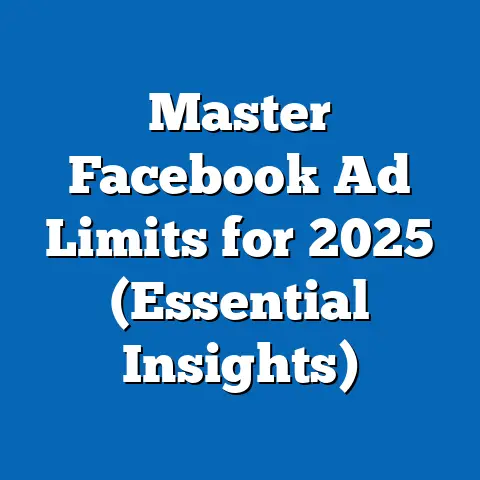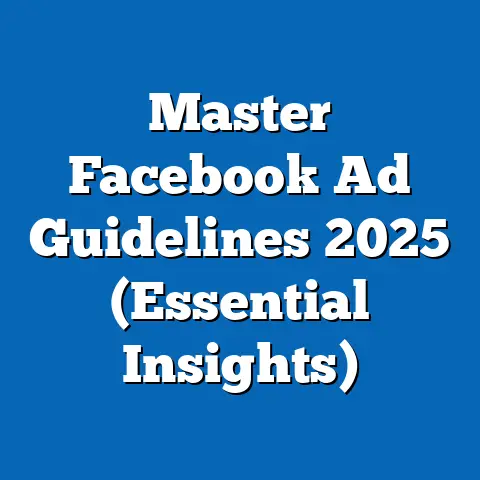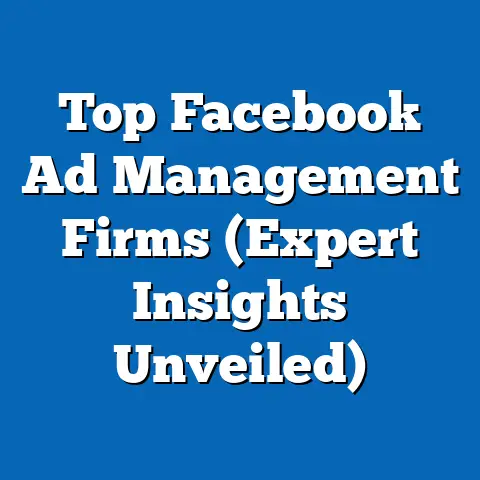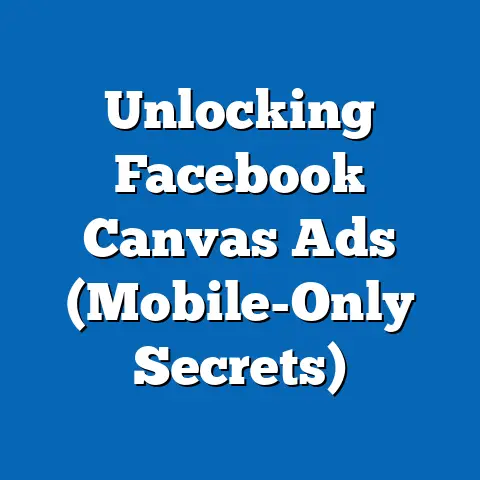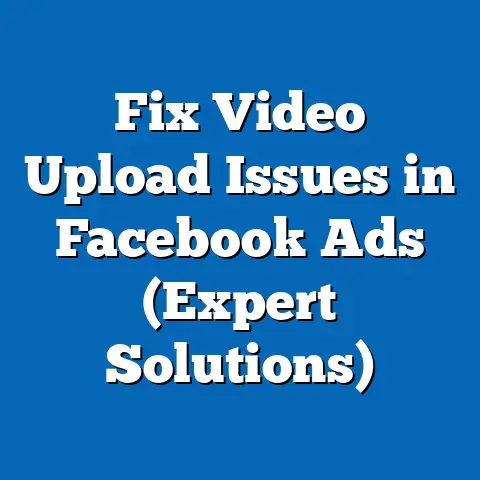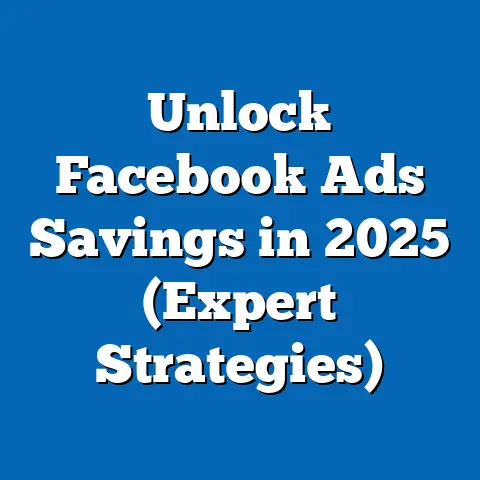Boost Facebook Ads with WhatsApp Insights (Game-Changer Strategy)
In today’s fast-paced digital advertising landscape, marketers are constantly searching for strategies that deliver maximum impact with minimal effort. I’ve seen firsthand how overwhelming it can be to juggle multiple platforms and complex campaigns. That’s why I’m excited to share a game-changing approach that leverages the power of two giants: Facebook and WhatsApp. By integrating WhatsApp insights into your Facebook advertising, you can unlock a low-maintenance yet highly effective strategy that enhances audience targeting, improves engagement, and ultimately drives more conversions. This isn’t about adding more to your plate; it’s about working smarter with the tools you already have. Let’s dive into how combining these platforms can revolutionize your advertising efficiency.
Understanding the Synergy Between Facebook and WhatsApp
Facebook and WhatsApp, both under the Meta umbrella, possess unique strengths that, when combined, create a powerful marketing force. Facebook, with its massive user base and sophisticated ad targeting capabilities, allows you to reach a broad audience based on demographics, interests, and behaviors. WhatsApp, on the other hand, offers a more intimate and personalized communication channel.
I remember when I first started using Facebook Ads, the sheer volume of options felt overwhelming. It was easy to get lost in the targeting and bidding strategies without truly understanding my audience. WhatsApp provides a direct line to your customers, allowing you to gather invaluable insights through conversations, feedback, and engagement.
Consider these points:
- Vast User Base: Facebook boasts billions of active users, while WhatsApp connects billions more. This combined reach allows you to tap into diverse markets and demographics.
- Complementary Features: Facebook excels at initial awareness and lead generation, while WhatsApp nurtures leads and builds customer loyalty through personalized interactions.
- Direct Communication: WhatsApp’s direct messaging capabilities enable real-time conversations, providing immediate feedback and addressing customer concerns.
Statistics consistently demonstrate the effectiveness of using both platforms in tandem. For example, businesses that integrate WhatsApp into their customer service strategy often see a significant increase in customer satisfaction and retention rates. This synergy is not just about reaching more people; it’s about building meaningful connections that drive conversions.
Takeaway: Facebook and WhatsApp are powerful tools individually, but their combined potential is exponential. By understanding their unique strengths, you can create a cohesive marketing strategy that maximizes your reach and engagement.
How to Gather WhatsApp Insights
The key to unlocking the power of WhatsApp for your Facebook ads lies in gathering actionable insights. This involves analyzing customer interactions, feedback, and engagement metrics within the WhatsApp platform. Fortunately, WhatsApp Business offers a range of features that streamline this data collection process.
One of the most valuable features is automated replies. By setting up automated responses to frequently asked questions, you not only provide instant support to your customers but also gather data on common inquiries. This information can reveal valuable insights into customer pain points and interests.
Another essential tool is customer labels. By categorizing your contacts based on their interactions and preferences, you can create highly targeted segments for your Facebook ad campaigns. For instance, you might label customers who have expressed interest in a specific product or service, allowing you to tailor your ads to their specific needs.
Here are some examples of key insights you can gather:
- Customer Preferences: What products or services are customers most interested in?
- Frequently Asked Questions: What are the most common questions customers ask?
- Common Concerns: What are the biggest concerns or objections customers have?
- Engagement Metrics: How do customers respond to different types of messages and content?
I’ve found that documenting and organizing these insights is crucial for easy reference during Facebook ad strategy development. Create a spreadsheet or use a CRM system to track your findings and identify patterns. This will allow you to quickly translate your WhatsApp insights into actionable strategies for your Facebook ad campaigns.
Takeaway: Gathering WhatsApp insights is essential for creating targeted and effective Facebook ads. By utilizing WhatsApp Business features and documenting your findings, you can gain a deeper understanding of your audience and tailor your messaging accordingly.
Implementing WhatsApp Insights into Facebook Ads
Now that you’ve gathered valuable insights from WhatsApp, it’s time to put them into action by creating targeted ad campaigns on Facebook. This involves translating your insights into actionable strategies that resonate with your audience and drive conversions.
The first step is to segment your audience based on the insights you’ve gathered. For example, if you’ve identified a segment of customers who are interested in a specific product, you can create a custom audience on Facebook targeting those individuals. This will ensure that your ads are seen by the people who are most likely to be interested in what you have to offer.
Next, you’ll need to align your ad content with the feedback you’ve received from WhatsApp. This means crafting messaging that addresses customer pain points, answers their questions, and highlights the benefits of your products or services. Personalization is key here. Use the insights you’ve gathered to tailor your ads to the specific needs and interests of each audience segment.
I remember working with a client who was struggling to generate leads for their online course. After analyzing their WhatsApp conversations, we discovered that many potential customers were hesitant to enroll because they were unsure if the course was a good fit for their skill level. To address this concern, we created a Facebook ad campaign that highlighted the course’s beginner-friendly curriculum and included testimonials from satisfied students. As a result, their lead generation rate increased by 40%.
Here’s a step-by-step guide to creating targeted ad campaigns based on WhatsApp insights:
- Identify audience segments: Based on your WhatsApp insights, identify distinct audience segments with shared interests or pain points.
- Create custom audiences: Create custom audiences on Facebook targeting each audience segment.
- Craft personalized messaging: Develop ad content that addresses the specific needs and interests of each audience segment.
- Test different ad formats: Experiment with different ad formats, such as image ads, video ads, and carousel ads, to see what resonates best with each audience segment.
- Monitor and optimize: Track the performance of your ads and make adjustments as needed to improve results.
Takeaway: Implementing WhatsApp insights into your Facebook ads requires a strategic approach that focuses on audience segmentation and personalized messaging. By aligning your ad content with the feedback you’ve received from WhatsApp, you can create highly targeted campaigns that drive conversions.
Measuring the Impact of Integrated Strategies
Once you’ve implemented your integrated Facebook and WhatsApp advertising strategy, it’s crucial to track and measure its effectiveness. This involves monitoring key performance indicators (KPIs) and analyzing data from both platforms to make data-driven decisions.
Some of the most relevant KPIs for this strategy include:
- Click-Through Rate (CTR): Measures the percentage of people who click on your ad after seeing it.
- Conversion Rate: Measures the percentage of people who take a desired action, such as making a purchase or filling out a form, after clicking on your ad.
- Engagement Metrics: Includes metrics such as likes, comments, shares, and saves, which indicate how engaged your audience is with your ad content.
- Cost Per Acquisition (CPA): Measures the cost of acquiring a new customer through your Facebook ads.
- Return on Ad Spend (ROAS): Measures the revenue generated for every dollar spent on Facebook ads.
Facebook Ads Manager provides a wealth of data and analytics that can help you monitor the performance of your ads. Pay close attention to the metrics mentioned above, as well as other relevant data points such as reach, impressions, and frequency.
In addition to Facebook Ads Manager, you can also use WhatsApp Business analytics to track the performance of your WhatsApp interactions. This includes metrics such as the number of messages sent, the number of messages delivered, and the number of messages read.
I’ve learned that continuous improvement is essential for maximizing the effectiveness of your integrated strategy. Regularly review your performance data and make adjustments as needed to improve results. This might involve refining your audience targeting, tweaking your ad content, or experimenting with different ad formats.
Takeaway: Measuring the impact of your integrated strategy is crucial for making data-driven decisions and optimizing your campaigns. By monitoring key performance indicators and analyzing data from both Facebook and WhatsApp, you can continuously improve your results.
Future Trends in Facebook Advertising with WhatsApp
The integration of Facebook and WhatsApp for advertising purposes is an evolving landscape, with exciting possibilities on the horizon. As technology advances, we can expect to see even more sophisticated ways to merge insights from both platforms and create personalized advertising experiences.
One potential development is the use of artificial intelligence (AI) to automate the process of gathering and analyzing WhatsApp insights. AI could be used to identify patterns in customer conversations, predict customer behavior, and generate personalized ad content.
Another trend to watch is the rise of conversational advertising. This involves using chatbots and other conversational interfaces to engage with customers in real-time and guide them through the purchase process. Conversational advertising can be particularly effective on WhatsApp, where customers are already accustomed to having direct conversations with businesses.
I believe that personalized advertising will become even more prevalent in the future. By leveraging data from both Facebook and WhatsApp, marketers will be able to create highly targeted ads that resonate with individual customers on a deeper level. This will require a strong focus on data privacy and transparency, as customers become increasingly aware of how their data is being used.
Takeaway: The future of Facebook advertising with WhatsApp is bright, with emerging trends and technologies promising to further enhance the integration of both platforms. By staying ahead of the curve and continuously exploring innovative ways to merge insights, you can gain a competitive edge in the ever-evolving digital marketing landscape.
Conclusion
In conclusion, leveraging WhatsApp insights to boost your Facebook ads is a game-changing strategy that offers a low-maintenance yet highly effective approach to digital advertising. By understanding the synergy between Facebook and WhatsApp, gathering actionable insights, implementing targeted ad campaigns, and measuring the impact of your strategies, you can unlock the full potential of both platforms and achieve significant results. I encourage you to implement these strategies in your advertising efforts to gain a competitive edge and foster deeper connections with your audience. The future of advertising is personalized, and by embracing the power of WhatsApp insights, you can stay ahead of the curve and drive meaningful results for your business.

